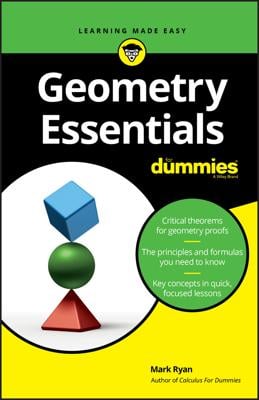Here are the basic forms for equations of lines:
- Slope-intercept form. Use this form when you know (or can easily find) a line's slope and its y-intercept (the point where the line crosses the y-axis). y = mx + b, where m is the slope and b is the y-intercept.
- Point-slope form. This is the easiest form to use when you don't know a line's y-intercept but you do know the coordinates of a point on the line; you also need to know the line's slope. y – y1 = m(x – x1), where m is the slope and (x1, y1) is a point on the line.
- Horizontal line. This form is used for lines with a slope of zero. y = b, where b is the y-intercept. The b (or the number that's plugged into b) tells you how far up or down the line is along the y-axis. Note that every point along a horizontal line has the same y-coordinate, namely b. In case you're curious, this equation form is a special case of y = mx + b, where m = 0.
- Vertical line. And here's the equation for a line with an undefined slope. x = a, where a is the x-intercept. The a (or the number that's plugged into a) tells you how far to the right or left the line is along the x-axis. Every point along a vertiscal line has the same x-coordinate, namely a.
Don't mix up the equations for horizontal and vertical lines. This mistake is extremely common. Because a horizontal line is parallel to the x-axis, you might think that the equation of a horizontal line would be x = a. And you might figure that the equation for a vertical line would be y = b because a vertical line is parallel to the y-axis. But as you see in the preceding equations, it's the other way around.






